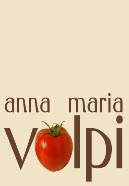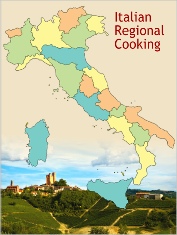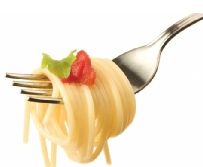







JOIN NOW
our Italian Cooking
Newsletter
our Italian Cooking
Newsletter

Publication or use of pictures, recipes, articles, or any other material form my Web site, on or off-line without written permission from the author is prohibited. If you would like to use my articles on your Web site or in your publication, contact me for details. Avoid infringing copyright law and its consequences: read the article 7 Online Copyright Myths by Judith Kallos
Read our
DISCLAIMER and
PRIVACY POLICY
before using
our site
-------------------
Linking Policy
Advertise with us
DISCLAIMER and
PRIVACY POLICY
before using
our site
-
Advertise with us
Copyright © 2003 - 2011 Anna Maria Volpi - All Rights reserved.
Anna Maria's Open Kitchen Site Map
site map
recipes
policies
about us
Some More Hot Topics You'd Like to See adv.




Anna Maria Suggests
Extra-
The Best Selection of Italian Extra-
Buy from the source Authentic Aged Traditional Balsamic Vinegar from Italy
Sicily, Apulia, Lazio, Liguria, and More...The Best Selection of Succulent Italian Olives Oil
Infused Extra-
Spice up your dishes with Infused Flavored Italian Extra-
Dried pasta was familiar in the Mediterranean area in the thirteenth and fourteenth centuries and was also mentioned in Genovese documents. The first traces of dry pasta in Europe came from Sicily, where documents from the twelfth century tell of something like a factory for dry pasta, localized in the Palermo area. From this site, the pasta (called itrjia) was then exported to other regions of southern Italy.
Genovese sailors were among the most active traders within the Mediterranean. It is not surprising that in the thirteenth century, Genoa became a trader, and then fabricator, of dry pasta, spreading it to many other countries — leading to this pasta being called Genovese.
The oldest macaroni recipes found are from Sicily. They include macaroni with eggplant (eggplant was introduced by the Arabs to Sicily around the year 1000 from India) and macaroni with sardines. Both of these delicious dishes are still present in Sicilian cooking.
Other establishments appeared through southern Italy, and the pasta called spaghetti today (meaning “strings”) or vermicelli (meaning “little worms”), for its threadlike shape, was called tria at that time. And, by then, dried pasta from Italy was known in Provence and in England. Tube-shaped short pasta would be named macaroni, supposedly from the Latin word maccare, meaning “to mash.”
In those times, fresh and stuffed pasta, dressed with cheeses, spices, or sweets, was an aristocratic type of food, while dry pasta was considered a popular food. Macaroni, though well known, was not an important food in the diet of Italians outside the places where it was produced.
The turning point came in Naples in the 1600s. Imports of meat and fresh produce became difficult and expensive due to an economic crisis. Flour was available instead, and pasta had become more affordable especially after the invention of the mechanical press. Dry pasta quickly became the people’s food. Neapolitans even came to be called mangiamaccheroni (macaroni eaters).
Durum wheat semolina was produced in large quantities in southern Italy. Macaroni is a filling food for poor people, and pasta with cheese contains good nourishment. As a result, the poor of southern Italy did not suffer pellagra and famine as much as the northerners, whose only staple was maize.
In 1785, Naples had 280 pasta shops. In the 1800s, pasta was sold by street vendors, who cooked it over a charcoal fire, and it was eaten on the spot with bare hands. Pasta was sold with no dressing, or merely with a bit of grated sheep cheese until the early 1800s, when the first tomato sauces appeared.
Southern Italy had hundreds of artisan pasta makers, but it was in 1824 in northern Italy, close to Genova, that the first industrial pasta factory was established by the Agnese family. A few years later, the Buitoni family founded another pasta factory.
After the Italian unification in 1862, pasta spread all over the country and traveled with Italian immigrants to the United States. Before long, pasta was eaten all around the world, and the rest “is history”!

A Brief History of Pasta
When describing the origins of pasta, a distinction should be made between fresh and dry pasta. Fresh pasta is dough made of flour and water and exists in most cultures and on all continents. Dry pasta began in Italy and embarked from there to conquer the world. People have attributed Marco Polo with having introduced spaghetti to Italy from China, but that is incorrect. Mediterranean people even before the Romans knew fresh pasta, and dry pasta was unknown to the Chinese.

How to cook Pasta
Preparing Fresh Pasta



How to eat Spaghetti
